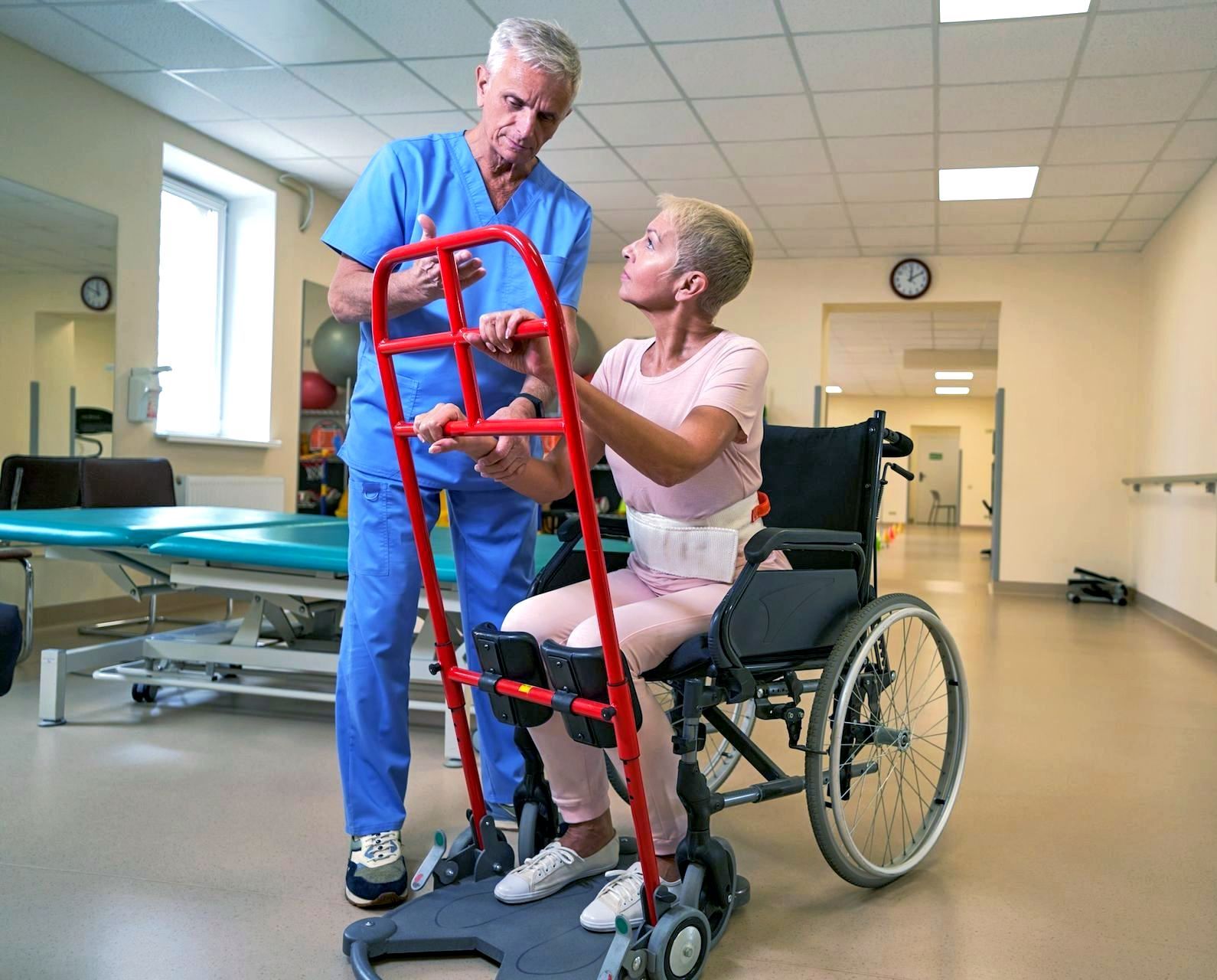What is a Spinal Cord Injury?
And can it be cured?
Spinal cord injury is damage to the spinal cord or spinal nerves and can have a major impact on a person's life.
As of today, there is no cure for spinal cord injuries.
How Do Spinal Cord Injuries Occur?
The spinal cord is well protected within the spine, but injuries can occur due to trauma or disease. Unlike skin or bones, the spinal cord has a limited capacity to heal, often resulting in permanent damage.
Motor vehicle accidents are the most common cause, often resulting in severe spinal trauma from high-impact collisions.
Car accidents
Falls, especially from heights or on slippery surfaces, frequently cause spinal fractures and nerve damage.
Falls
Gunshots, stabbings, and assaults can lead to spinal cord injuries from direct trauma to the spine.
Violence
High-impact sports like football, diving, or skiing can cause spinal cord damage from collisions or falls.
Sports Injuries
Types of Spinal Cord Injuries
The severity of an SCI depends on the level of injury and whether it fully or partially disrupts nerve signals.
Quadriplegia (Tetraplegia)
Damage to the cervical (C1-C8) , causing paralysis in all four limbs and the torso (t1-T12) .
Paraplegia
Damage lower in the spine (thoracic or lumbar), affecting the legs and lower body.
Effects of Spinal Cord Injuries
SCI affects more than just movement—it impacts multiple bodily functions.
Bladder & bowel control
Loss of voluntary control can lead to complications.
Blood pressure & circulation
Unstable blood pressure and poor circulation increase risks of complications.
Sexual function
Changes in arousal, sensation, and fertility.
Chronic pain & sensory issues
Phantom sensations and nerve pain are common.
Breathing & coughing
Higher injuries can weaken lung function and increase infection risks.
Rehabilitation & Recovery
Recovery after a SCI focuses on regaining as much independence as possible. Rehabilitation is a team effort involving doctors, nurses, physical therapists, occupational therapists, psychologists, and nutritionists.
Personalized Recovery Plans
Tailored therapy for each patient.
Learning New Skills
Adaptive techniques for daily life.
Mental & Emotional Support
Coping strategies for long-term well-being.


CAN AI HELP?
The future of research & AI innovations
New advancements in artificial intelligence (AI) and robotics offer hope for improving treatment outcomes and quality of life.
Thor Aspelund, Ph.D., and Margrét Jóhannsdóttir, M.S., authored a report for ISCI titled "Spinal Cord Injury and Artificial Intelligence." The goal was to review research on the use of AI and robotics for individuals with spinal cord injuries, as well as the application of AI in spinal cord injury research.







